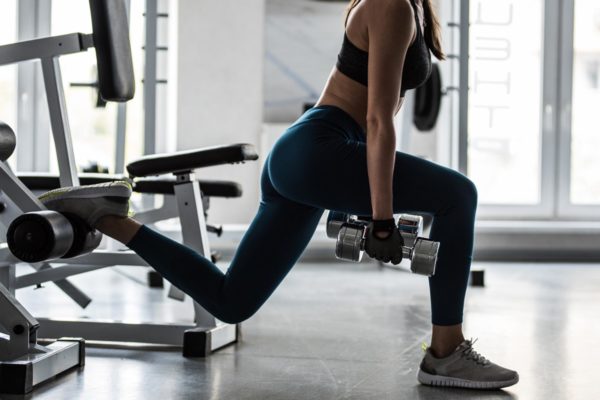This Is The One Thing At The Gym That Could Save Your Life—And You Probably Have No Clue Where It Is

Jeremy Bentham/Shutterstock
Cardiologists agree that going to the gym is an important part of a heart-healthy day. However there is a risk—ever so slight—that a workout can trigger an underlying heart condition that can lead to cardiac arrest. Which is why it’s crucial to know where the automated external defibrillator (AED) is: A recent study has found that even in the hands of amateurs, these devices are lifesavers.
Make sure you don’t have any of these surprising signs of an unhealthy heart, and consider these tests that can detect silent heart disease.
Cardiac arrest is when the heart suddenly and unexpectedly stops beating. Each year, more than 350,000 cardiac arrests occur in the United States—and these are just the ones that occur outside a hospital and are documented by emergency medical technicians. Cardiac arrest isn’t a heart attack (which is often survivable), but a heart attack can cause cardiac arrest in some cases. Generally speaking, cardiac arrest is fatal if it isn’t treated within minutes, and every minute leads to a 10 percent reduction in the likelihood of survival.
You’ll be happy to know that exercise-induced cardiac arrest accounts for only five percent of all cases of cardiac arrest. In addition, if you’ve already had a heart attack, regular exercise can lower your risk of another heart attack.
The AED, a portable device that can shock the heart into a normal cardiac rhythm, has been a game-changer in boosting the survival rate from exercise-induced cardiac arrest to a whopping 93 percent over the past 18 years, according to research presented at the 2017 annual gathering of the members of the European Society of Cardiology, a not-for-profit society of medical professionals.
The research involved 252 amateur sports centers in the Piacenza region of Italy, from which data was collected over the 18-year study period. A total of 26 cardiac arrests were documented overall, and of those, 15 were in AED-equipped centers. For the 11 patients who suffered a cardiac arrest at non-AED-equipped centers, outcomes were grim: Just one made it through without brain damage (brain damage occurs incrementally, minute-by-minute, as the brain is deprived of blood flow from the heart). But for the 15 in the locations with an AED, 14 of them survived without brain damage.
Daniela Aschieri, MD, who spearheaded the research on behalf of Italy-based, Progetto Vita (Project Life), advised EurekAlert that speed in locating and using the AED is of paramount importance. Don’t wait for the ambulance to arrive, she advised, because “the probability of survival was higher when a member of the public used the AED rather than waiting for medical assistance.”
All fifty states have enacted laws and/or regulations requiring that public gathering places have AEDs available. An AED should be retrieved, activated, and the shock administered within three minutes of the victim’s collapse, according to the American Heart Association. For that reason, most AED manufacturers recommend having at least one AED per floor in all multi-story buildings. Owners of AEDs should figure out the most probable areas where a person may suffer an arrest, and keep the AED unit in an easily accessible spot. This often turns out to be a near a reception area, lobby, lunch room, or centrally-located restroom facilities.
If you don’t see one prominently displayed at your gym, ask a manager where you can find the AED (on each floor). To get even more comfortable, get confirmation from the manager that all gym employees are trained in CPR, which is an integral part of cardiac arrest survival, even with an available AED. In fact, check out this useful guide on how to do CPR.
Story Credit: https://www.rd.com/health/fitness/aed-save-life-at-gym/


